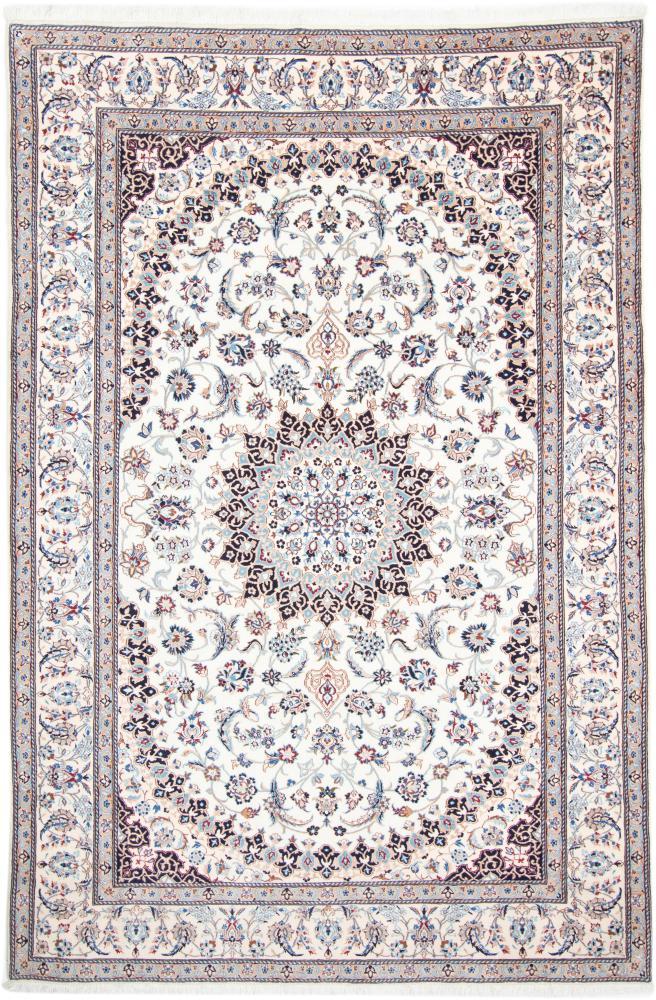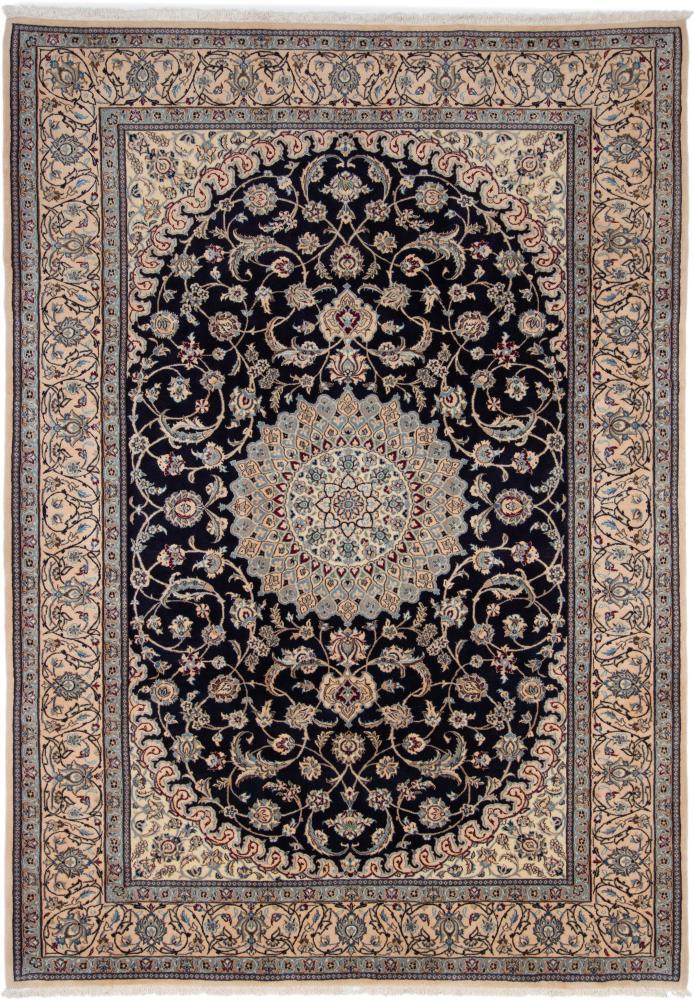Introducing Tabas handwoven carpet
Tabas city has always been considered as one of the important centers of handwoven carpet production in Khorasan due to its climatic location and potential potentials related to carpet weaving. Carpet weaving in Tabas can be studied since 1300; But before that, various types of rugs and rugs, including a well-designed rug, were common in this region. In this article, we are going to introduce you to the features of carpet weaving in Tabas, as one of the most important weaving centers in Greater Khorasan.
Historical and geographical features
The name of this city was changed to Golshan in 1311 AH, but the use of this name was not common for Tabas and it remained the same old name. In the Islamic period, there were two cities named Tabas in Qahestan province (which is equivalent to today's South Khorasan province) and they were called Tabasin. But historians and geographers gave special characteristics for each of these two cities. Among them, one was called Tabs al-Annab (Tabas Anab) or Tabs Masinan and the other was called Tabs Al-Tamar (Tabas Dates). What we are considering in this article is Tabas Eltmar, which is located on the edge of the great central desert of Iran, and most of the roads that cross the desert lead to this city. This is why historians have called this city the gate of Khorasan. Currently, this city is approximately 600 km south of Mashhad, and is one of the desert cities of Khorasan province, which is located in its southwest. It is limited to Namak desert and Kashmir from the north, Birjand and Ferdous from the east, Lut desert and Kerman province from the south, and Lut desert and Bard from the west.
Background of carpet weaving in Tabas
In general, the beginning, development and evolution of Tabas carpet can be analyzed in three historical periods. In the following, to learn more about the background of carpet weaving in Tabas, we will examine these three periods:
1- The first examples of Tabas carpets: The beginning of carpet weaving in Tabas city goes back to the early years of the current century (14th Hijri). Many experts believe that "Ostad Najd Shibani" was the first producer of Tabas carpets. All the carpets that were produced in this period and until around 1322 are known as Tabas carpets in the local term. The design of these carpets was mostly of the type of simple and very coarse woven laths and fringes. This means that these carpets have a low count (22 knots per 6.5 cm) and the fibers used in the texture are relatively thick. The color of these rugs is often lacquered.
2- Continuation of the carpet weaving activity in the past in Tabas: Master Najd Shibani trained students during his career. Among his students, we can mention Haj Mehdi Attari, Mohammad Nakhai and Qasimnia. Due to the bad economic conditions in the last years of the Second World War and the impossibility of working alone, these people started joint activities with other craftsmen and businessmen from other cities who came to Tabas for the revival and development of Tabas carpets. Among these new people and businessmen, we can mention Master Misbah Yazdi, who was a resident of Yazd, who was one of the first carpet weaving masters who immigrated to Tabas. From this time on, the second period of carpet weaving activities began in Tabas. The production of carpets with the cooperation of new masters and capitalists continued in this way until the date of the great Tabas earthquake, and some of these people were among the well-known producers of Tabas due to their continuous activity. The carpets of this period are similar in design and color to The carpets of the previous period were better in terms of quality.
3- Popularity of carpet weaving in Nayin style in Tabas: The third period of the history of carpet weaving in Tabas, which was actually the period of transformation and the peak of fundamental and important movements in the field of handwoven carpets in Tabas, started gradually from 1350. The beginning of this important development was from the village of Helwan, 90 kilometers northwest of Tabas. In this year, Helwan village hosted one of the people of Khor and Biabank from Isfahan province. In this year, due to the privileged position of Nayin carpets in domestic and foreign markets, the people of Helvan village, Ali Moghimi, brought an expert and skilled Nayin carpet weaver from Khor and Biyabank to this village, and over a period of time, all the people of Helwan village started weaving Nayin carpets. and gradually other villages around Tais such as Garit, Ashgabat and then the city of Tabas also became interested in Nayini carpets; So that currently Tabas Nayini carpets have a special identity and characteristics and there is no other production in this city apart from Nayini design carpets. In fact, after the Tabas earthquake in 1357, the local Tabas carpet gave way to the Naeeni carpet.

The old carpet known as 24 colors of Tabas:
These types of carpets were woven in Tabas around 1335 onwards, inspired by the Mashhad carpet. In these carpets, between 18 and 24 colors were often used, and all these colors were obtained using natural dyes. The first color used in these carpets is lacquer obtained from red seeds. The red seed used to prepare this high-quality color was also bought from abroad. The second most common color in these beautiful 24-color carpets was navy blue, which was obtained from the indigo pigment that was purchased from Germany. The indigo pigment was in powder form, and Tabasi dyers used it to obtain five different colors: navy blue, dark blue, dougi (light blue), dark green, and jade. Other colors used in this carpet were obtained from pomegranate skin, walnut skin, celery and runas, all of which were of plant and natural origin, and the carpets woven with these colors were unique in terms of color stability and beauty. But unfortunately, after some time, the use of chemical dyes became common in this region, and this caused the quality of Tabas carpets to decline.
Appearance characteristics of Tabas hand-woven carpet:
design and color
Tabas carpet has its own characteristics in terms of design; Including the fact that the texture of floral designs and images are not usually seen in Tabas handwoven carpets and the weavers of this region are less inclined to the texture of such carpets. But on the contrary, due to the special type of carpet coloring, Shah Abbasi and Slimi's Lakh and Tanraj designs are more widely used in Tabas. The variety of colors in today's carpets woven in Tabas is usually not more than 12 colors. The most used colors in the handmade carpets of this region are:
White, light khaki, garlic khaki (dark), light blue, garlic blue (dark), cream, azure, brown, jade, turquoise, lacquer and maroon.
Tabas carpet dimensions
The common dimensions of today's Tabas carpets are generally 2 x 3 and 2.5 x 3.5 square meters. In Tabas, there is not much demand for texture smaller than this.
Technical characteristics of the texture in Tabas carpet
Raw material:
In Tabas carpets, cotton yarn is used as warp and wool yarn as pile.
Node type:
The type of knot used in these carpets is Persian or symmetrical knot. Persian weaving is also popular in this region; In this way, the weaver involves two front threads and two bottom threads to make each knot.
How to draw:
The cheleh of Tabas carpets is done in Persian style, in this way, they first prepare the cheleh on the ground and then place them on the carpet rack.
Raj:
The current index and most of the carpets of Nayin design in Tabas varies between 30 and maximum 40. In some cases, higher statistics are also seen. (Almost all Tabas carpets are woven in the form of 9 layers compared to the genuine Nain carpets, and this is the main characteristic of the Nain carpets, which are either woven in the form of 9 layers, 6 layers, or 4 layers.
Carpet weaving:
Tabas carpets are woven in the Persian style at the beginning and end of the weave.
Shirazeh:
All Tabas carpets are simultaneously woven with Shirazeh.
Carpet payment:
In the past, the initial payment of the Tabas carpet was done after weaving eighty centimeters of the carpet, using big scissors before finishing the weaving and opening the carpet. But currently, carpet cleaning in this area is often done after finishing the carpet and using electric scissors.
How to weave:
Tabas carpets are two-weave type and in some cases they tend to be semi-loop style. Tabas carpet designs are generally the same as Nayin carpet designs. In fact, it should be mentioned that due to the high sales of Nayin carpets in the market, the Nayin design rugs gradually opened their place in Tabas and surrounding villages and gradually replaced the Tabas carpets, so that currently the Nayin rugs with Tabas weave have an identity. And they have become a special feature and there is no other production in this city except the Naeen design carpet.
Designers and producers of Tabas carpets
Badi Attari, Mohammad Nakhai, Qasim Nia, Mohammad Ali Khodhi, Abbas Ali Gholami, Mohammad Hassan Nasiri and Jalal Rasolov are among the most famous producers of contemporary tabas styles. Also, Tawakkul Fathi, Abdullah Fathi, Mohammad Safarzadeh, Mohammad Reza Shibani, Mashallah Hadi, Hassan Soltani and Hossein Fathi are among the designers of Tabas carpets in recent decades and today.
final word
In general, it should be said that today's Tabas hand-woven carpet is often the inspiration and copy of the design and color of the Naeen hand-woven carpet. That is, Shah Abbasi's lachak and tonraj design, with the dominant color of the lacquered background, accounts for the largest amount of Tabas carpet production. The old Tabas carpets, which were dyed using natural materials, had unique beauty and quality, and in terms of color variety, up to 24 colors were used in them.
You can inquire about Buying Handwoven Carpets , Buying Handwoven Kilim and Mats , and Buying Handwoven Pictorial Rug Tableaus online from the Hoveida Carpet Store and register all your orders and Wherever you are in the world, deliver it to the desired address in less than 4 working days.
If you are interested in reading other articles in the field of Handwoven carpets or Handwoven Pictorial Rug Tableaus , please refer to Hoveida Carpet Commercial .
Leave a comment
Your email address will not be published. Required fields are marked *












